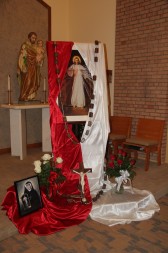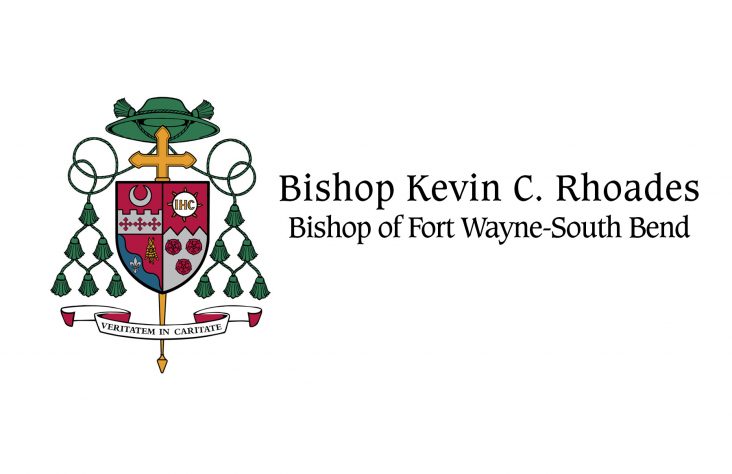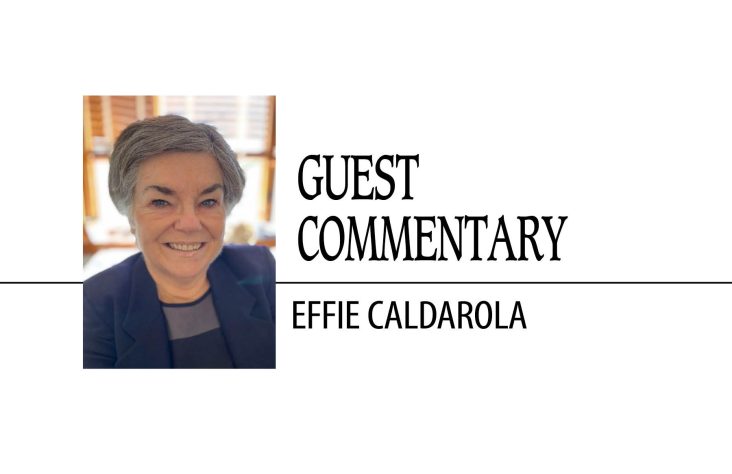November 3, 2015 // Local
The devotional pieces of Divine Mercy

Tess Steffen
Father Daniel Cambra, a priest of the Marians of the Immaculate Conception, described the five devotional pieces of Divine Mercy using the mnemonic FINCH: Feast, Image, Novena, Chaplet of Mercy and Hour of Mercy.
By Tim Johnson
AUBURN — Many readers may be devoted to the daily recitation of the Chaplet of Mercy, but there are four other devotions of Divine Mercy to note as well. They include the feast day, the image, the novena and the hour of mercy. Father Dan Cambra, a priest of the Marians of the Immaculate Conception whose charism is to promote Divine Mercy, recently discussed the Divine Mercy devotions after he made a presentation at Immaculate Conception Parish in Auburn.
“The Chaplet of Mercy is one of the five devotions that Jesus revealed to St. Faustina,” Father Cambra said.
One prays the Chaplet of Mercy, “we pray on the beads of the rosary the prayers that Jesus gave her to pray,” Father Cambra said. “So it is a completely unique devotion that was revealed by Jesus to St. Faustina.”
On several occasions, Father Cambra noted, Jesus told Faustina “to pray it for the dying, especially people who were not at peace dying because they had great anxiety over the state of their soul,” Father Cambra noted.
St. Faustina would often pray the chaplet — and sometimes even bilocate — at the bedside of an anxious dying person and they would suddenly feel at peace, Father Cambra said.
At one point in the “Diary” Jesus tells Faustina: “If a person prays the Divine Mercy Chaplet even once, they will receive sufficient grace to avoid eternal damnation.”
Father Cambra noted that a lot of people draw back — calling it magic — “Well, it’s not magic,” Father Cambra said. “The chaplet is a prayer in which we offer to the Father the satisfaction of Christ’s redemptive act. We appropriate it for ourselves and for the conversion of sinners.”
Faustina was often asked to pray it even for the dead. Faustina reported three incidences when a recently deceased sister came to her asking her for prayers. When Faustina prayed the prayers they received a great deal of peace and would return to her and show her gratitude.
“The Chaplet of Divine Mercy is part of that call to be co-operators with God’s grace. Just as Christ died on the cross for our sins, so now we offer His passion and suffering back to the Father for those who are in need of God’s grace and mercy,” said Father Cambra.
“When I first looked into joining the Marians, that aspect of praying for the souls in purgatory as being central to our priestly vocation very much appealed to me,” Father Cambra said. Even though the congregation was already promoting the Divine Mercy message, Father Cambra was not familiar with the message when he entered the order. When Father Cambra read in the “Diary” that Sister Faustina prayed the Divine Mercy chaplet for the souls in purgatory, she made a comment: “How thin the veil is — the Church triumphant in heaven, the Church militant — you and I here on earth still struggling against our own sinful ways and the possibility of temptation around us — and the Church suffering, who had at least been guaranteed that they will one day be worthy of heavenly glory, but must still continue to purge themselves of that which they cling to which is not of God.”
In 2000, Pope John Paul proclaimed the feast of Divine Mercy, the second Sunday of Easter, and canonized Sister Faustina. In the Gospel that week, Jesus walks through the door and says to everyone gathered: “Peace be with you.”
In the image of Divine Mercy, Jesus’ left hand is touching His chest, and from there, from His heart, shine rays red and pale, “reminding us of the blood and the water that was shed when His heart was pierced by a lance,” Father Cambra said. “His other hand is raised in blessing.”
The feast of Divine Mercy is about reconciliation both with God and with others, Father Cambra said.
The feast and image itself are intimately connected, Father Cambra noted.
In the image, Father Cambra also pointed out some things that are often overlooked. “One of the most important ones I believe is the foot,” Father Cambra said. “The left foot of Jesus is stepping out towards us.”
In the Sacred Heart devotion, St. Margaret Mary received Jesus’ revelation of His love. He asks St. Margaret Mary to love Him.
In the Divine Mercy message, which is in many ways foundational to the Sacred Heart message, “Jesus goes beyond the love, to be the mercy of God. He no longer waits for us to come to Him.”
The idea of the Divine Mercy image, with that foot stepping forward, “is a reminder to us, very powerfully, that if we make some effort Jesus is ready to receive us,” Father Cambra said.
“The feast of Divine Mercy is one of those things that we are yet to appreciate,” Father Cambra added. “It’s an opportunity to say, ‘I’m sorry for all my shortcomings,’ but more than that, ‘I give thanks and praise that Your mercy is ever flowing.’ And the feast and the image kind of pull together as a single unit.”
With the Novena of Divine Mercy, “Jesus is giving us something very unique,” Father Cambra added.
“The novena for the preparation for the feast of Divine Mercy is completely different from all those other novenas,” Father Cambra said. “It’s not about praying for something that you want, it’s about putting on the mind of Christ. In that sense, it’s a novena for the post Vatican II mentality. … How can I be more Christ-like to my brothers and sisters?”
The first thing, Father Cambra said, “is to pray for their conversion, the acts of charity that come through being merciful — especially the people that we find it difficult to be merciful towards — our coworkers, our neighbors, our family and friends, the inlaws — everybody that comes into contact with us.”
The chaplet is part of that offering up the action of Christ for the conversion of sinners, Father Cambra added.
The fifth devotion, the hour of mercy, for Father Cambra is the “key that unlocks the door to the understanding of a lot of the other devotions and all the revelations of St. Faustina.”
Faustina was asked to pray the Chaplet of Mercy at 3 p.m. At one other time Jesus asked Faustina to pray the Stations of the Cross at 3 p.m., to spiritually connect oneself to the difficult, arduous task of Christ’s final hours and death.
To meditate on the sufferings of His disciples, the suffering of His mother, is to see how, in fact, one’s sufferings are no less significant, but actually made more significant if they are joined to the sufferings of Christ.
“We offer our sufferings up as a tribute to Him who suffered for us,” Father Cambra said. Since pain and suffering is a part of life, “why not use it as an opportunity to grow in holiness and prayer,” suggested Father Cambra.
A good resource to begin to discover Divine Mercy is the Bible. Another resource is to pray before the Eucharist. “Placing oneself in proximity to the Eucharist causes us to recognize the infinite humility of God,” Father Cambra said. “Not only did He decide to leave His eternal throne and joy outside of place, of time — He became man, was born of the Virgin Mary — that was a huge step in humility, more than any of us can ever achieve, ever even consider.”
Father Cambra said if one reads the “Diary,” they should not read it too fast. He suggests reading two pages a day and occasionally taking a day off. Many find it difficult, he said, as it does not read like a novel.
Of the “Diary,” Father Cambra noted, “These are the internal workings of the Holy Spirit of a young woman who was called to great sanctity. If you read two pages a day … you can still get through that book in a year.”
Father Cambra has read the “Diary” 12 times and learns something new and profound every time.
In preparation for the play, “Faustina: Messenger of Divine Mercy,” Today’s Catholic will publish a series of stories on Divine Mercy and Sister Faustina.
_______
‘Faustina: Messenger of Divine Mercy’ Tickets are now available
Visit the diocesan website: www.diocesefwsb.org/faustina for locations, showtimes, trailer and additional information about the play.
Tune in to Redeemer Radio on Friday mornings for the opportunity to win tickets.
The best news. Delivered to your inbox.
Subscribe to our mailing list today.






